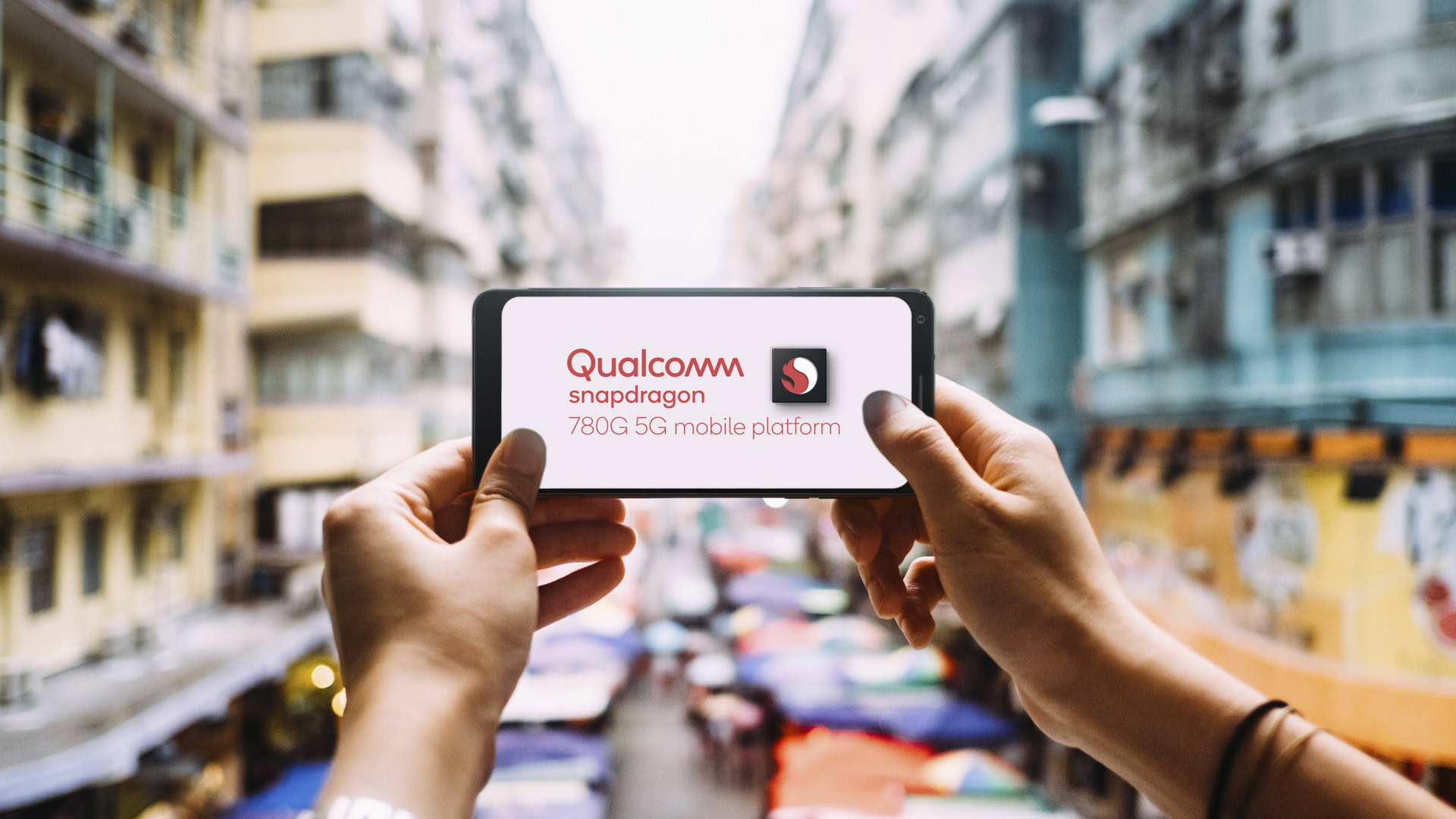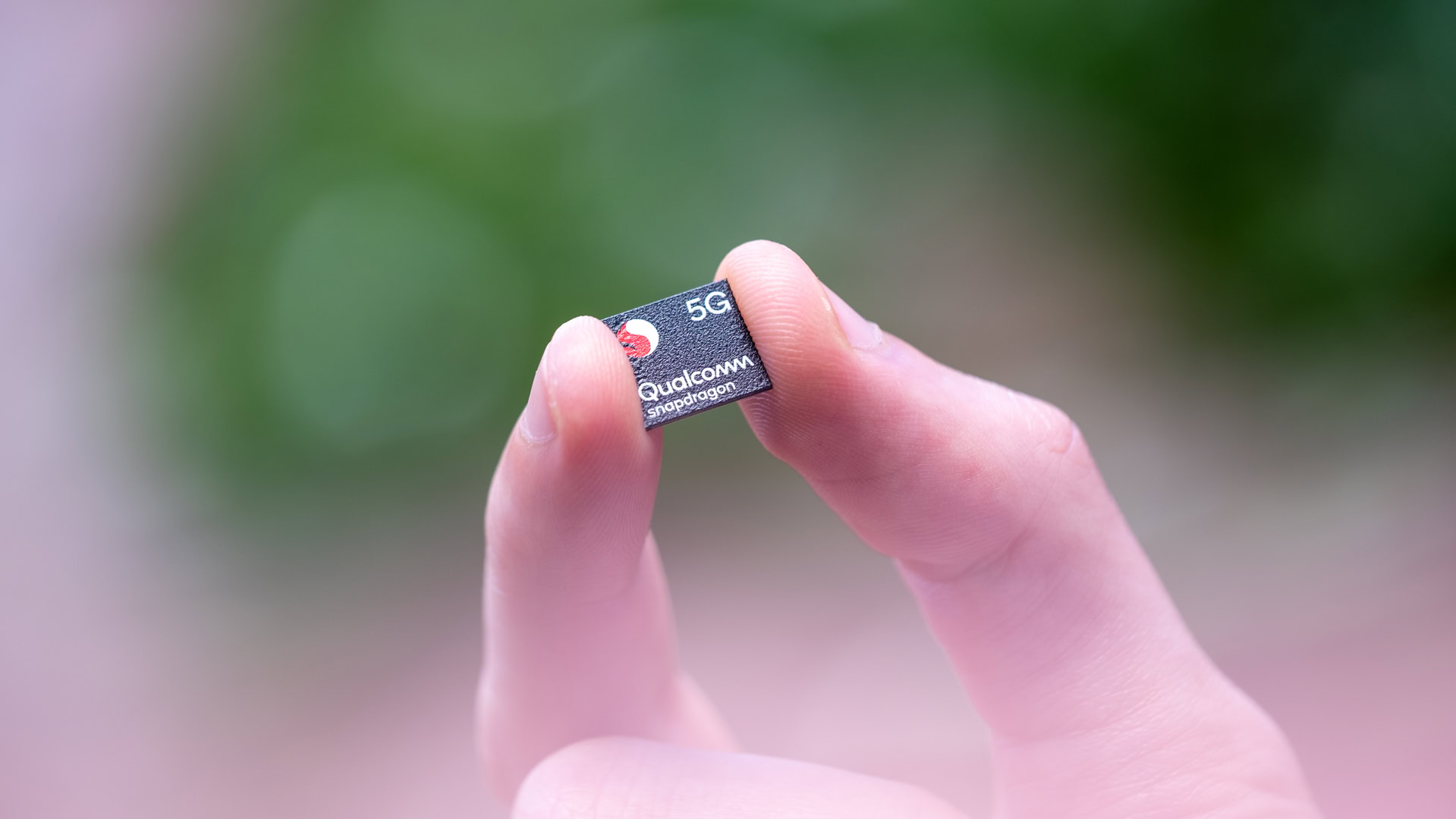Affiliate links on Android Authority may earn us a commission. Learn more.
Meet this year's mainstream processor: the Qualcomm Snapdragon 780G
March 25, 2021
Qualcomm’s Snapdragon 7-series of processors have proven quite popular recently, powering a range of more affordable 5G smartphones throughout 2020. Examples include the popular Google Pixel 5 and OnePlus Nord, both packing the Snapdragon 765G. Then there’s the newer Samsung Galaxy A52 5G powered by the Snapdragon 750G, with everything you need for a solid smartphone experience.
Today, Qualcomm unveiled its latest high-end processor in the every growing 7-series: the Qualcomm Snapdragon 780G 5G. This chipset is destined to power mid-range smartphones hitting the market in the second quarter of 2021.
Qualcomm Snapdragon 780G: Closing in on flagship-tier performance
Qualcomm’s 7-series set out to quickly bring 8-series features to more affordable price points. The Snapdragon 780G sits right on the cutting edge.
It’s built on a 5nm manufacturing process, matching Qualcomm’s flagship Snapdragon 888 chipset. There’s a much more powerful Kryo 670 CPU setup this generation too, built from four of the latest Arm Cortex-A78 big CPU cores and four little Cortex-A55 cores. There’s no powerhouse Arm Cortex-X1 core here; that remains reserved for flagship-tier smartphones.
Even so, the move to four big cores should give the 780G much more bite for high-performance applications versus the 765G and 750G. Qualcomm boasts a 40% CPU performance uplift from previous generation 7-series chipsets. Snapdragon 780G-powered handsets can also be paired up with up to 16GB of fast LPDDR4 memory, which can hit up to 2.1GHz clock speeds.
Read more: Qualcomm Snapdragon 750G: More choice for affordable 5G
The Adreno 642 graphics processor also looks to be another major improvement. Qualcomm hasn’t given us specific performance numbers, but the Adreno naming scheme points to performance that should fall somewhere around 2019’s flagship-grade Snapdragon 855 processor. Complete with 120Hz refresh rate support, 10-bit gaming, and updatable GPU drivers, this could turn out to be a solid gaming package.
Qualcomm Snapdragon 780G specs
| Snapdragon 780G | Snapdragon 765 / 765G | Snapdragon 750G | |
|---|---|---|---|
CPU | Snapdragon 780G Kryo 670 octa-core 1x Prime @ 2.4GHz (Cortex-A78) 3x Performance @ 2.2GHz (Cortex-A78) 4x Efficiency @ 1.9GHz (Cortex-A55) | Snapdragon 765 / 765G Kryo 475 octa-core 1x Prime @ 2.3GHz (Cortex-A76) 1x Performance @ 2.2GHz (Cortex-A76) 6x Efficiency @ 1.8GHz (Cortex-A55) | Snapdragon 750G Kryo 570 octa-core 2x Performance @ 2.2GHz (Cortex-A77) 6x Efficiency @ 1.8GHz (Cortex-A55) |
GPU | Snapdragon 780G Adreno 642 | Snapdragon 765 / 765G Adreno 620 | Snapdragon 750G Adreno 619 |
DSP | Snapdragon 780G Hexagon 770 with Tensor Accelerator | Snapdragon 765 / 765G Hexagon 696 with Tensor Accelerator | Snapdragon 750G Hexagon 694 with Tensor Accelerator |
Camera | Snapdragon 780G 84MP single camera 64+20MP dual camera 25+25+25MP triple camera Zero shutter lag, 10-bit HEIF, staggered HDR, MFNR 192MP snapshot | Snapdragon 765 / 765G 36MP single camera 22MP dual camera with zero shutter lag 192MP snapshot | Snapdragon 750G 36MP single camera 16MP dual camera with zero shutter lag 192MP snapshot |
Modem | Snapdragon 780G Snapdragon X53 5G/LTE 5G: 3,300Mbps down | Snapdragon 765 / 765G Snapdragon X52 5G/LTE 5G: 3,700Mbps down, 1,600Mbps up 4G: 1,200Mbps down, 210Mbps up | Snapdragon 750G Snapdragon X52 5G/LTE 5G: 3,700Mbps down, 1,600Mbps up 4G: 1,200Mbps down, 210Mbps up |
Other wireless | Snapdragon 780G Bluetooth 5.2 Wi-Fi 6E Qualcomm aptX suite Bluetooth LE Audio | Snapdragon 765 / 765G Bluetooth 5.0 Wi-Fi 6 ready Qualcomm TrueWireless and aptX Adaptive audio | Snapdragon 750G Bluetooth 5.1 Wi-Fi 6 ready Qualcomm TrueWireless and aptX Adaptive audio |
Fast charging | Snapdragon 780G Quick Charge 4 Plus | Snapdragon 765 / 765G Quick Charge 4 Plus Quick Charge AI | Snapdragon 750G Quick Charge 4 Plus |
Manufacturing process | Snapdragon 780G 5nm | Snapdragon 765 / 765G 7nm | Snapdragon 750G 8nm |
More than just higher performance

In addition to significant general and gaming performance boosts, the Snapdragon 780 integrates more powerful AI, imaging processing, and networking capabilities.
Qualcomm has doubled the AI processing performance with its latest Hexagon 770 DSP, hitting 12 TOPS of compute capability. That’s not far off the number-crunching prowess of 2020’s Snapdragon 865 flagship-tier processor, which boasted 15 TOPS.
Of course, camera capabilities are super important in modern mid-range and flagship smartphones. The Snapdragon 780G’s Spectra 570 boasts three 14-bit ISPs, with 2.5Gbps of computer vision processing capabilities. The phone can capture images and video from three 25MP cameras simultaneously. In addition, there’s support for 4K HDR video capture with real-time bokeh. Impressively, this is really close to the image processing capabilities of the Snapdragon 888.
See also: What’s driving the Snapdragon 865 camera? Two gigapixels.
Just like previous entries in the 7-series, the Snapdragon 780G boasts 5G support. There’s no mention of mmWave compatibility on the Snapdragon X53 spec sheet and mmWave wasn’t implemented in many of 2020’s mid-range handsets anyway. However, from what we know about Qualcomm’s 5G chipsets, the Snapdragon X53 modem works with Qualcomm’s mmWave antenna modules, so mmWave 5G support can be deployed by handset manufacturers in markets where there’s demand. Download speeds peak at 3.3Gbps on sub-6GHz 5G links.
Sticking with networking, the Snapdragon 780G sports Wi-Fi 6 and Wi-Fi 6E with 6GHz spectrum via the FastConnect 6900 chipset. There’s also Bluetooth 5.2 complete with LE Audio, the latest aptX audio technologies, and Snapdragon Sound.
What to expect from the Snapdragon 780G 5G

The upper end of Qualcomm chipset portfolio looks quite interesting in 2021. The Snapdragon 888 remains firmly on top, followed by the 870 which is essentially a souped-up version of the previous generation 865 Plus. The 780G then sits just below that, although it’s really not far behind this chipset in many regards and actually scores a few design wins over it.
The 780G is a major step up for mid-tier performance, as it’s built on a 5nm manufacturing process with four high-performance Cortex-A78 cores and a beefy Adreno 642 GPU. The chip should bring 7-series performance much closer to premium tier products this year. Qualcomm backs this all up with bleeding-edge connectivity, machine learning, and image processing features. Qualcomm doesn’t seem to expect much in the way of mmWave 5G adoption with this chipset, which might be a little disappointing for some markets. Although most consumers probably wouldn’t notice in reality anyway.
On paper, the Qualcomm Snapdragon 780G 5G looks like a solid piece of hardware that’s really ambitious for a 7-series chipset. And that’s exactly what we’ve been waiting for. We’ll have to see how all this technology affects product pricing, but we should find this out soon when the first smartphones arrive in the next few months.